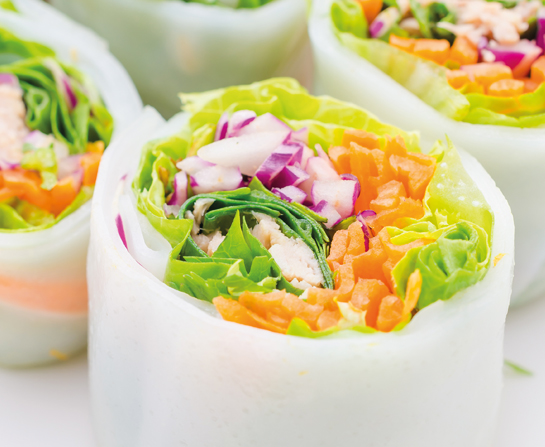WORDS RACHEL SOON
Speaking from recent first-hand experience: moving houses is NOT FUN. Whether it’s due to a new college, a new job, or a change in family circumstances, the process of packing up and moving an entire household’s worth of possessions to a different building can be incredibly stressful for everyone involved—and potentially hazardous to one’s health. Read up HealthToday basics on how to stay both sane and safe while dealing with a big move.
Pack smart.
Heavy objects go in smaller boxes, lighter objects in bigger boxes. Do not under any circumstances fill a human-sized box with books just because you want them all in the same place. Unless you or your moving help are secretly a superhero, someone’s joints will end up in a bad condition, and that someone’s chiropractor will be very pleased.
For reference, the Malaysian Department of Occupational Safety and Health (DOSH) recommends a maximum lifting- and-lowering weight of 25 kg for average adult men (16 kg for women).
Spread the weight out among large boxes by putting heavier, sturdier items (books, papers) at the bottom of the box, then filling the remainder with lighter items (bedding, clothes). If the heavy stuff is fragile (dishes, glassware), the lighter materials can be arranged to pad them as well.
When packing, try to put the box on a chair or table so that you don’t have to keep bending down to put items inside.
Lift with your legs, not with your back.
Bending your back over and over to pick up heavy boxes is a sure- fire shortcut to causing a back injury that could last anywhere from a few hours to a lifetime. To prevent that, make sure you lift (and lower!) objects using a squatting movement that spreads out the weight through your hips and legs.
Remember the DOSH maximum weight recommendations? That assumes you’re holding it as close to your core as possible. A box of dishes may seem manageable when you’re carrying it next to your belly, but if it’s going on the top of a stack or an overhead shelf, try to reduce its weight even further.
And as always, don’t try to carry everything on your own; adrenaline may help you in the short term to pick up that heavy end table by yourself, but you’ll feel the ache days later.
“Put heavier, sturdier items at the bottom of large boxes, then fill it with lighter items.”
Have some protective gear on hand (and face and feet).
Consider a face mask to keep your sinuses clear. Even if you’re not usually sensitive to everyday levels of dust, the layers of ancient dust that tend to be stirred up from forgotten corners of the house in a move can cause uncomfortable sensations in your lungs and trigger allergies you didn’t know you had.
“It’s important to keep walking paths through rooms as clear as possible.”
If you’re doing a lot of the lifting yourself, a pair of good work gloves (durable, stretchable, sweat-resistant and well-padded) will help you in both getting a good grip on heavy objects as well as protecting your hands from injuries.
Comfortable shoes are also invaluable since you’ll likely be spending a lot of time on your feet. Think about anti-slip soles, ankle protection and good arch support; your favourite old sports shoes will probably do.
Keep the floor clear of stepping hazards.
Moving is a messy process by nature, but it’s important to keep walking paths through rooms as clear as possible, especially if renovations are still in progress. Sweep the floor at the end of each day to clear potential splinters or other sharp debris that might end up in someone’s foot later.
Don’t leave scissors or blades lying around on the floor, even when in the middle of packing or unpacking. Another hazard to look out for are electrical cables, loose pieces of plastic or other packaging that could trip people up while carrying items.
Don’t forget to rest.
It can be tempting to survive the moving period with 4 hours’ sleep a night and enough coffee to replace half of your blood circulation, but it’s best to try avoiding this. Lack of sleep impairs your concentration, memory, and dexterity, which can lead to accidents (tripping, dropping objects), bad decisions (stacking fragile objects precariously) as well as added stressful moments (struggling to deal with five different contractors calling you at once).
You might technically have “more time” if you sleep less, but your body will process things slower, so it might not really be worth it.
If you can’t get your full 8 hours’ sleep during the night, try to find the opportunity for a nap on a chair or in a car during the day; even a short 15-minute stint can help improve your mood and your ability to process problems. If you’re unable to fall asleep, it’s still not time wasted; just the act of reclining with your eyes closed helps relax your body, and puts you in a slightly better state than otherwise.
Don’t forget to eat and drink water, too.
In the chaos of moving, sometimes it’s easy to forget you’re hungry or thirsty until you actually sit down for a moment and feel your stomach growl, or start to feel faint while standing. Ideally, you shouldn’t be straining yourself to that point; make a point of trying to eat and drink at around your usual meal times.
Maybe you’ve packed all your kitchen stuff already, or you just don’t have time to cook or to make a drive out and eat. Getting takeout delivered is fine, but be sure to keep some level of fruit, vegetables, lean meat and grains in your diet. Easy grab-and-go foods to stock up on like biscuits, granola bars, hard- boiled eggs, yogurt and blended juices can help keep you going.
Keep water bottles handy. As tempting as it is to grab sports drinks or soft drinks for the energy rush, your body needs to stay hydrated, especially with the amount of water you’ll be losing as you sweat while moving around all day in the heat. HT
If you like this article, do subscribe here.



















